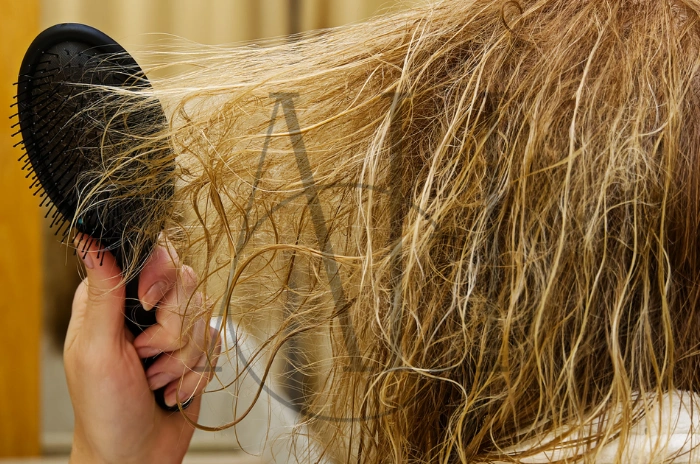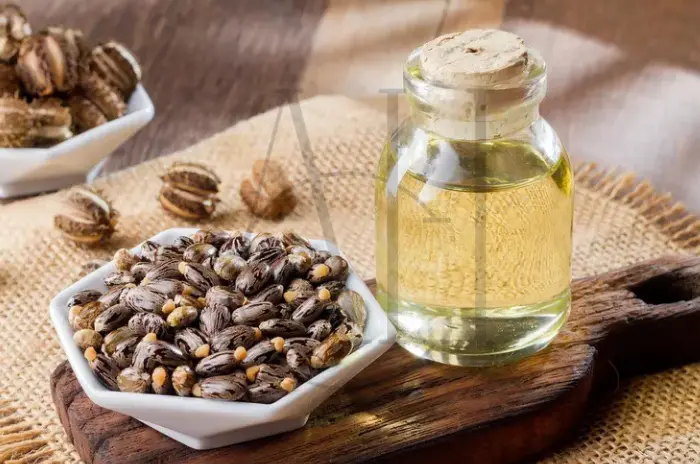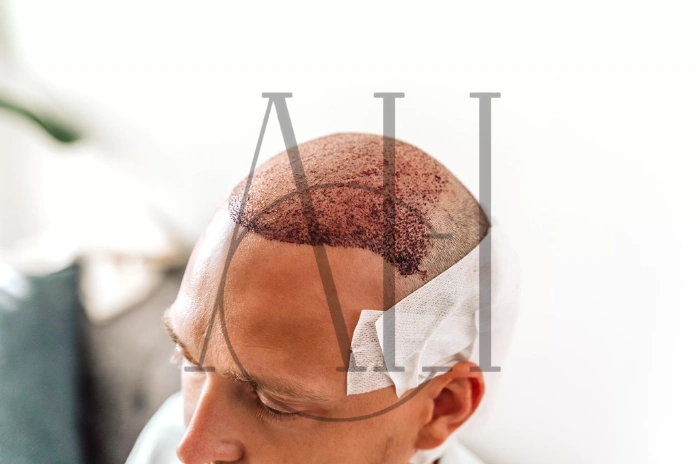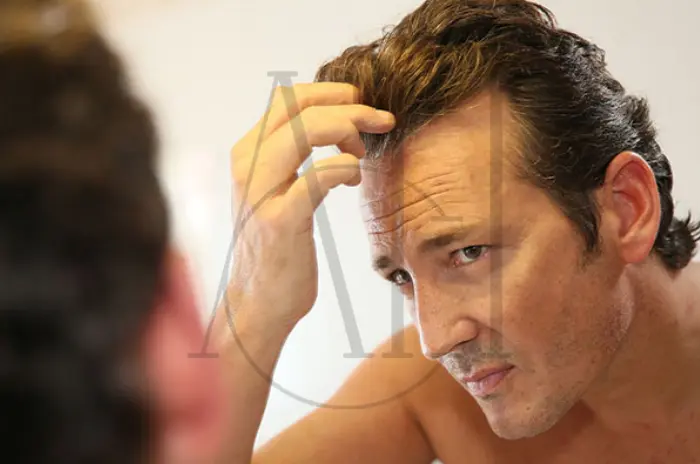Hair is one of our most defining features, yet many people don’t fully understand the complex structure that makes up each strand. The hair shaft represents the visible portion of hair that extends beyond the scalp, and understanding its composition is crucial for maintaining healthy, strong hair. When this delicate structure becomes damaged, it can lead to breakage, dullness, and various hair shaft disorders that affect both appearance and hair health.
Modern lifestyle factors, environmental stressors, and improper hair care practices contribute significantly to hair shaft damage causes. From excessive heat styling to chemical treatments, our daily routines often compromise the integrity of the hair’s protective layers. By understanding the science behind hair shaft structure and implementing proper prevention strategies, you can maintain healthier hair and prevent common forms of damage.
Table of Contents
ToggleUnderstanding the Basic Structure of the Hair Shaft
The hair shaft anatomy consists of a complex cylindrical structure that emerges from the hair follicle and extends to the hair tip. This visible portion of hair is composed entirely of dead, keratinized cells that have been pushed upward from the hair root. Unlike living tissue, the hair shaft cannot repair itself once damaged, making prevention absolutely critical for maintaining healthy hair.
Each strand of hair grows from a specialized structure called the hair follicle, which extends deep into the dermis. The follicle acts as a tiny factory, continuously producing new hair cells that eventually form the shaft. The hair follicle structure includes the dermal papilla, matrix cells, and various layers that contribute to hair formation and growth.
The diameter and cross-sectional shape of the hair shaft vary significantly between individuals and ethnic groups. Caucasian hair typically has a circular cross-section, while African hair often displays an elliptical shape that contributes to its natural curl pattern. Asian hair tends to be the thickest and most circular in cross-section, which often results in straighter growth patterns.
Understanding these structural variations is essential for proper hair care, as different hair types require specific approaches to prevent damage. The hair shaft structure also determines how light reflects off the hair surface, influencing shine and overall appearance. Healthy hair shafts have smooth, intact surfaces that reflect light uniformly, creating the lustrous appearance we associate with healthy hair.
The Three Layers of the Hair Shaft Explained
The hair shaft consists of three distinct layers, each serving specific functions in protecting and strengthening the hair strand. The cuticle cortex medulla arrangement creates a sophisticated biological structure that balances protection, strength, and flexibility. Understanding these layers helps explain how damage occurs and why certain prevention strategies prove more effective than others.
The outerle layer, known as the cuticle, consists of overlapping scales that resemble roof shingles. These transparent, colorless cells form the hair’s primary protective barrier against environmental damage. The cuticle scales can lift and separate when exposed to alkaline substances, heat, or mechanical stress, leading to increased porosity and vulnerability to damage. Cuticle function includes moisture regulation, chemical protection, and light reflection that contributes to hair shine.
Beneath the cuticle lies the cortex, which makes up approximately 75-90% of the hair shaft’s total mass. This layer contains the majority of the hair’s keratin protein and determines the hair’s strength, elasticity, and color. The cortex houses melanin granules that provide natural hair pigmentation and also contains the disulfide bonds that give hair its structural integrity. When these bonds break due to chemical or heat damage, the hair becomes weak and prone to breakage.
The innermost layer, called the medulla, is not present in all hair types and appears as a central core in thicker hair strands. The cortex and medulla in hair work together to provide structural support, though the medulla’s exact function remains less clearly understood than the other layers. Fine hair often lacks a medulla entirely, while coarse hair typically contains a well-developed medullary core that contributes to the hair’s overall diameter and strength.
Genetics and Ethnicity That Shape Hair Shaft Texture
Hair shaft characteristics are primarily determined by genetic factors that influence follicle shape, protein composition, and growth patterns. The genes responsible for hair texture affect multiple aspects of hair follicle anatomy, including the angle at which hair emerges from the scalp and the cross-sectional shape of the follicle opening. These genetic variations result in the diverse range of hair textures observed across different populations.
Ethnic background plays a significant role in determining hair shaft structure and susceptibility to various types of damage. African-textured hair typically has an elliptical cross-section and more curved follicles, resulting in naturally curly or coily hair that is more prone to dryness and breakage. The curved structure creates weak points along the hair shaft where breakage commonly occurs, particularly at points of maximum curvature.
Caucasian hair generally has a more circular cross-section and straighter follicle structure, leading to hair that ranges from straight to wavy. This hair type tends to have better moisture retention along the length of the shaft but can still experience damage from environmental factors and styling practices. The keratin in hair composition also varies between ethnic groups, affecting the hair’s response to chemical treatments and heat styling.
Asian hair typically displays the most circular cross-section and contains the highest concentration of keratin protein in hair structures. This results in hair that is generally stronger and more resistant to chemical damage but can be more difficult to curl or wave due to its robust protein structure. Understanding these genetic influences helps individuals choose appropriate hair care methods that work with their natural hair characteristics rather than against them.
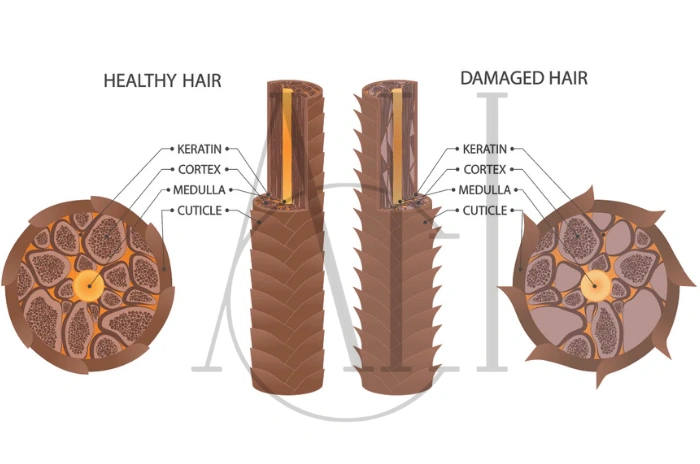
What Causes Damage to the Hair Shaft
Physical damage to the hair shaft occurs through various mechanisms that compromise the integrity of the cuticle, cortex, or both layers simultaneously. Mechanical stress from brushing, combing, or styling tools can lift cuticle scales and create microscopic tears in the hair surface. Over time, this repeated trauma accumulates and leads to visible damage such as split ends, breakage, and loss of shine.
Heat styling represents one of the most common hair shaft damage causes in modern society. Temperatures above 350°F (175°C) can cause immediate protein denaturation within the cortex, while lower temperatures applied repeatedly still cause cumulative damage. The rapid expansion and contraction of hair proteins during heating and cooling cycles weakens the internal structure and can lead to the formation of micro-bubbles within the hair shaft.
Chemical treatments including coloring, perming, and relaxing alter the hair shaft structure at the molecular level. These processes often involve alkaline substances that force the cuticle scales to open, allowing chemicals to penetrate into the cortex. While this enables the desired chemical changes, it also permanently alters the hair’s protein structure and can significantly reduce its strength and elasticity.
Environmental factors such as UV radiation, wind, and pollution contribute to ongoing hair shaft deterioration. UV exposure breaks down keratin protein bonds and can fade natural or artificial hair color. Wind creates friction that mechanically damages the cuticle, while pollution particles can accumulate on the hair surface and interfere with normal moisture balance.
| Damage Type | Primary Cause | Affected Layer | Prevention Method |
|---|---|---|---|
| Heat Damage | Styling tools above 350°F | Cuticle & Cortex | Use heat protectant, lower temperatures |
| Chemical Damage | Hair dyes, perms, relaxers | Cortex primarily | Deep conditioning, protein treatments |
| Mechanical Damage | Brushing, tight hairstyles | Cuticle mainly | Gentle detangling, loose styles |
| UV Damage | Sun exposure | Cuticle & color molecules | UV protection sprays, hats |
| Split Ends | Cumulative damage | Hair tips | Regular trims, protective styling |
Understanding these various damage mechanisms enables the development of comprehensive prevention strategies.
The Role of Keratin in Hair Shaft Composition
Keratin protein in hair serves as the primary structural component that gives hair its strength, flexibility, and resistance to environmental stressors. This fibrous protein makes up approximately 95% of the hair’s dry weight and forms complex molecular structures that determine the hair’s physical properties. The specific arrangement of keratin molecules within the hair shaft directly influences characteristics such as tensile strength, elasticity, and moisture retention capacity.
The keratin structure consists of long protein chains held together by various types of chemical bonds, including hydrogen bonds, salt bridges, and disulfide bonds. Disulfide bonds represent the strongest of these connections and are responsible for the hair’s overall structural integrity. When these bonds break due to chemical treatments or heat damage, the hair shaft structure becomes compromised, leading to weakness and increased susceptibility to breakage.
Keratin in hair also plays a crucial role in moisture regulation and chemical resistance. The protein chains can absorb and release water molecules, allowing hair to maintain flexibility under varying humidity conditions. This hygroscopic property enables healthy hair to stretch up to 30% of its original length when wet without breaking, demonstrating the remarkable engineering of the keratin structure.
The quality and arrangement of keratin protein can be influenced by nutrition, age, and overall health status. Deficiencies in sulfur-containing amino acids, which are essential for keratin synthesis, can result in weaker hair with altered structural properties. Understanding the role of keratin helps explain why protein treatments and proper nutrition are essential components of maintaining healthy hair shaft integrity over time.
The Connection Between Hair Growth Cycle and Shaft Health
The hair growth cycle phases directly influence the quality and characteristics of the hair shaft that ultimately emerges from the follicle. This cycle consists of three distinct phases: anagen (growth), catagen (transition), and telogen (rest). During the anagen phase, which lasts 2-7 years, active cell division in the hair follicle structure produces the keratin-rich cells that form the hair shaft.
The health of the hair follicle anatomy during the anagen phase determines the initial quality of the hair shaft. Factors such as nutrition, hormones, and blood circulation affect the follicle’s ability to produce strong, healthy hair cells. Poor follicle health during this critical growth period can result in hair shafts that are inherently weaker and more prone to damage throughout their lifespan.
The transition from anagen to catagen and telogen phases also affects hair shaft characteristics. As the follicle prepares to shed the hair, changes in the attachment structure can influence the hair’s appearance and behavior. Understanding these cyclical changes helps explain why consistent hair care practices are essential for maintaining optimal shaft health throughout the entire growth cycle.
How Hair Follicles Influence Shaft Growth and Structure
The hair follicle structure acts as a sophisticated biological factory that determines virtually every aspect of the resulting hair shaft anatomy. The shape, size, and orientation of the follicle directly influence the diameter, cross-sectional shape, and growth direction of the emerging hair. Genetic factors control follicle development, but environmental influences can also affect follicle function and the quality of hair production.
The dermal papilla, located at the base of the hair follicle anatomy, supplies nutrients and growth signals that regulate hair shaft formation. Blood vessels surrounding the papilla deliver essential nutrients, including amino acids needed for keratin protein synthesis. When circulation is compromised or nutritional deficiencies exist, the quality of the resulting hair shaft may be significantly affected.
FAQ :Common Causes of Hair Shaft Damage and How to Prevent It
What are the three main layers of hair?
The three main layers of hair are the cuticle (outer protective layer), cortex (middle layer containing keratin and melanin), and medulla (innermost core present in thicker hair strands).
What is the primary protein that forms hair?
Keratin is the primary protein that forms hair, making up approximately 95% of the hair’s dry weight and providing structural strength and flexibility.
How do genetics influence hair shaft texture?
Genetics determine follicle shape, cross-sectional structure, and protein composition, which directly influence whether hair grows straight, wavy, or curly and affects its strength and damage resistance.
Can a hair follicle cause shaft damage?
While follicles don’t directly damage existing shafts, unhealthy follicles can produce weaker hair that is more susceptible to damage from environmental factors and styling practices.

